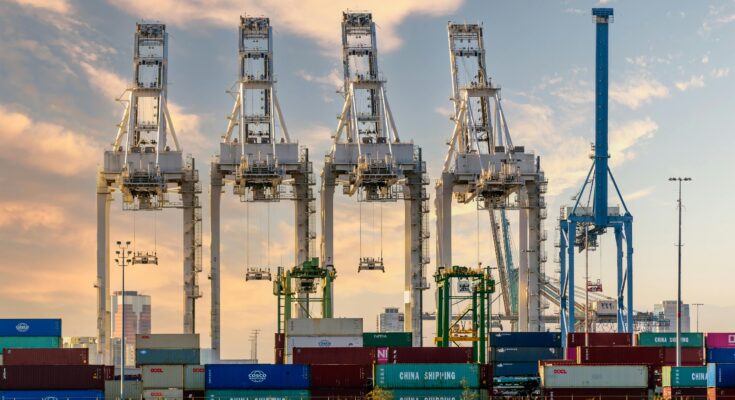Overview and Scope
Stationary catalytic systems refer to pollution control devices that use a catalyst to convert one or more chemical species into other chemical species. It is technology that is used to control emissions from stationary sources such as power plants, refineries, and industrial facilities. These systems are used to reduce the emission of harmful substances such as chlorofluorocarbons, sulfur oxides, and other pollutants in various industrial applications.
Sizing and Forecast
The stationary catalytic systems market size has grown strongly in recent years. It will grow from $4.77 billion in 2023 to $5.11 billion in 2024 at a compound annual growth rate (CAGR) of 7.2%. The growth in the historic period can be attributed to stringent environmental regulations, industrial expansion, increased focus on air quality, rising awareness of environmental issues, global energy consumption pattern, government incentives and subsidies.
The stationary catalytic systems market size is expected to see strong growth in the next few years. It will grow to $6.53 billion in 2028 at a compound annual growth rate (CAGR) of 6.3%. The growth in the forecast period can be attributed to stricter emission standards, renewable energy integration, urbanization and industrialization trends, global efforts to combat climate change, public pressure and corporate social responsibility. Major trends in the forecast period include technological innovations, technological advancements, technological advancements in catalytic technologies, increased focus on energy efficiency, growing industrialization in emerging markets.
Order your report now for swift delivery, visit the link:
https://www.thebusinessresearchcompany.com/report/stationary-catalytic-systems-global-market-report
Segmentation & Regional Insights
The stationary catalytic systems market covered in this report is segmented –
1) By Technology: Selective Catalytic Reduction, Oxidation Catalyst
2) By Pollutant Type: Nox (Nitrogen Oxides), CO (Carbon Monoxide) Hydrocarbons, HAP (Hazardous Air Pollutants), DPM (Diesel Particulate Matter), NH3 (Ammonia)
3) By End-Use Industry: Chemical, Oil And Natural Gas, Power Plant, Metal And Mining, Cement, Other End-Use Industries
Asia-Pacific was the largest region in the stationary catalytic systems market in 2023. The regions covered in the stationary catalytic systems market report are Asia-Pacific, Western Europe, Eastern Europe, North America, South America, Middle East, Africa
Intrigued to explore the contents? Secure your hands-on a free sample copy of the report:
https://www.thebusinessresearchcompany.com/sample.aspx?id=13214&type=smp
Major Driver Impacting Market Growth
The increasing demand for clean energy sources is expected to propel the growth of the stationary catalytic systems market going forward. Clean energy sources refer to energy systems that generate energy produced using renewable, non-polluting, zero-emission resources and include energy conserved through energy-saving practices. Stationary catalytic systems are used in various clean energy sources to improve their efficiency and performance, and to reduce reliance on fossil fuels. For instance, in April 2021, according to the International Renewable Energy Agency (IRENA), a UAE-based intergovernmental organization, the capacity of the world’s renewable energy sources to generate electricity reached 3 064 gigawatts (GW) in 2021, adding 9.1% to the share of renewable energy. Further, in June 2023, according to the International Energy Agency, a France-based independent intergovernmental organization, global renewable capacity upgrades are expected to expand by 107 gigatons (GW) by 2023. Therefore, increasing demand for clean energy sources is driving the growth of the stationary catalytic systems market.
Key Industry Players
Major companies operating in the stationary catalytic systems market report are Shell plc, BASF SE, Honeywell International inc., Bharat Heavy Electricals Limited, Yara International, Tenneco Inc., Johnson Matthey, Hitachi Zosen Corporation, Corning Incorporated, DuPont de Nemours Inc, Clariant AG, Durr Group, Umicore N.V., NIPPON SHOKUBAI CO. LTD, CECO Environmental, Babcock and Wilcox Enterprises Inc., Dinex Group, Ducon Infratechnologies Ltd., Kwangsung Corporation Ltd, Nett Technologies, Unifrax Holding Co., Air Clean Energy, DCL International, Catalytic Products International Inc., APC Technologies Inc., Advanced Catalyst Systems LLC
The stationary catalytic systems market report table of contents includes:
1. Executive Summary
- Stationary Catalytic Systems Market Characteristics
- Stationary Catalytic Systems Market Trends And Strategies
- Stationary Catalytic Systems Market – Macro Economic Scenario
- Global Stationary Catalytic Systems Market Size and Growth
.
- Global Stationary Catalytic Systems Market Competitive Benchmarking
- Global Stationary Catalytic Systems Market Competitive Dashboard
- Key Mergers And Acquisitions In The Stationary Catalytic Systems Market
- Stationary Catalytic Systems Market Future Outlook and Potential Analysis
- Appendix
Contact Us:
The Business Research Company
Europe: +44 207 1930 708
Asia: +91 88972 63534
Americas: +1 315 623 0293
Email: [email protected]
Follow Us On:
LinkedIn: https://in.linkedin.com/company/the-business-research-company
Twitter: https://twitter.com/tbrc_info
Facebook: https://www.facebook.com/TheBusinessResearchCompany
YouTube: https://www.youtube.com/channel/UC24_fI0rV8cR5DxlCpgmyFQ
Blog: https://blog.tbrc.info/
Healthcare Blog: https://healthcareresearchreports.com/
Global Market Model: https://www.thebusinessresearchcompany.com/global-market-model




